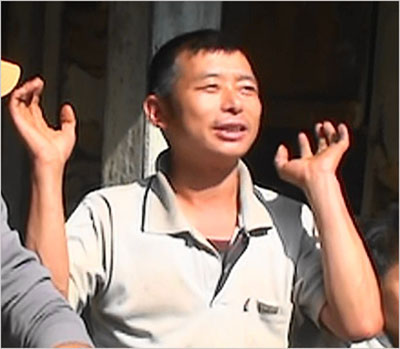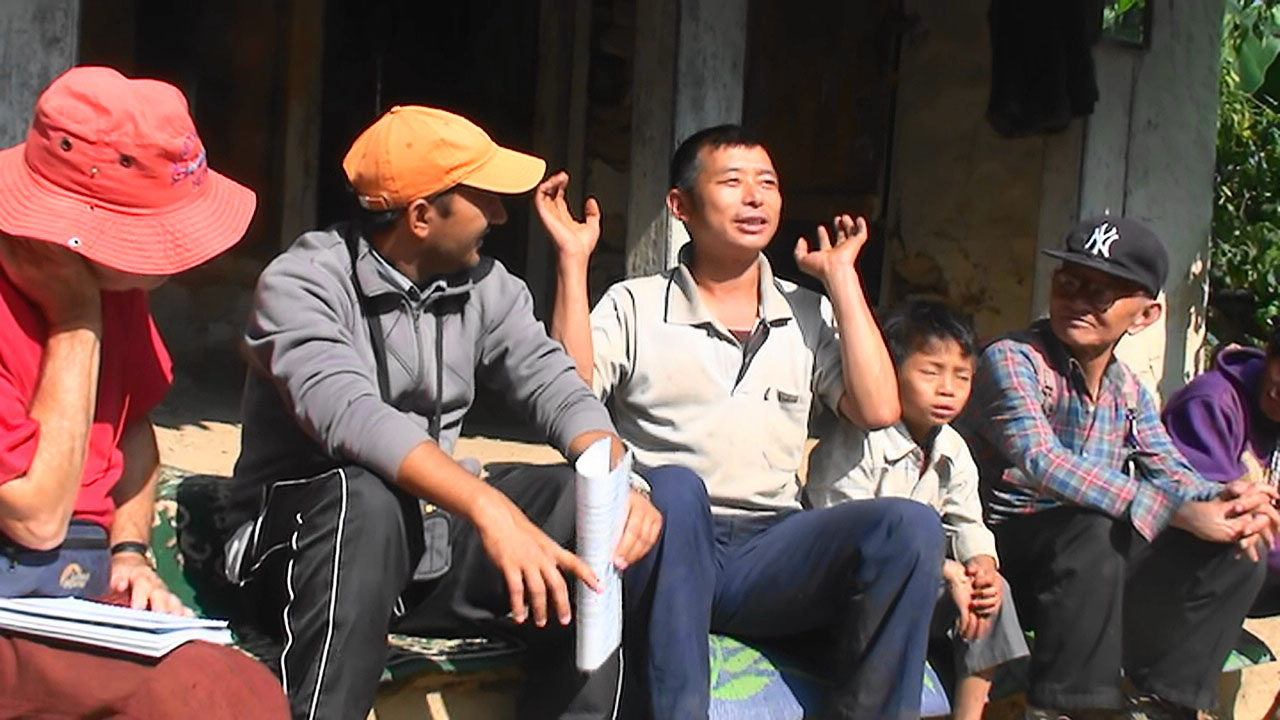Naïna Bahadur Rai is 31 years old.
He is a farmer and is well educated, having completed his SLC. He is also a porter on treks, which brings in a bit of money for the house.
Naïna’s situation after the earthquake is the same as that described for Dan Kumari Rai, as he is her husband.
On 25 April I was on the roof of the house we were building with 18 people when the earthquake hit. I immediately jumped off the roof. I could see the trees moving, everything was moving. The 18 companions ran away; they went back to their homes and their families. Around my house there was no great destruction. People were shouting. There were landslides across the river, on the other bank of the Dudhkosi. Following this disaster, Padam, my father, fell ill and died two months later. I remember that at the time of the earthquake, it was a bit cold.
During the second earthquake, I was planting maize and turning over the soil with the two buffalos. Everything started to move, everything was moving, on the opposite bank too. There were loud noises. My house broke. It was unimaginable, incredible. I was so scared. I knew not to go back into the house. After that, 45 people gathered near my house, in the greenhouse.
These people stayed in the greenhouse for 15 days. They wanted to die together if there was another earthquake. But it was difficult for 45 people to live together for much longer. So we built temporary shelters for the families. To survive, we had to go into the houses to get food and belongings, but we were scared. Then we shared what we found.
On the day of the first earthquake, I looked for somewhere to protect myself. I also looked for food. After the second earthquake, we visited the houses to see if there were any victims.
After the first tremor, the 18 people said that if there was another tremor, it would no longer be possible to live here. After the second earthquake, a neighbour and I said to each other: “We’re going to die”.
Older people thought that the gods were unhappy because of the dishonesty of the Nepalese, because there were too many people on earth, because of the actions of politicians. But for educated people, there is water and earth. For them, the Tibetan tectonic plates are moving towards Nepal and this produces earthquakes. It can take two or three years for the Tibetan tectonic plate to stabilise and for the earthquakes to stop.
In the discussions that followed, we realised that the most important thing was to protect the family, the food and the animals. Then the radio gave the news: all the deaths in Kathmandu, all the destruction of buildings. This increased our fears. It created a sense of doom and gloom.
The image that comes to mind when I think back on those moments is that if the same thing happens again, there will be a big crack in the earth and we’ll all be swallowed up. But it’s God who decides.
Yes, there were changes after those tremors: we now know that you can’t build anywhere, anyhow, and no more than two storeys high. The best solution for earthquake resistance is to build like in Kathmandu (where there are 5 to 10 storeys) with cement and scrap metal. But that’s expensive, you need financial resources. Perhaps by borrowing from banks.
As far as I’m concerned, Nepal is an earthquake-prone country that requires earthquake-resistant construction. You can think of houses built with sandbags, but maybe that’s more expensive.



